Back in September, we were honoured to be invited to a ‘Bloggers and Influencers’ event to help launch a new pregnancy health campaign, following some groundbreaking research from Tommy’s and Prof Alexander Heazell.
The event was hosted by Clemmie Telford, from Mother of All Lists fame, and was attended by people with much greater influencing power than I have – the likes of Gi Fletcher, Scummy Mummies and Mutha.Hood for example. It really highlighted the power that social media can play in ensuring that people are aware of the latest health and wellbeing campaigns and messages – something that through traditional means can take years and years to target the same people. It’s no secret that the vast majority of the population access some form of social media on a daily (okay, hourly) basis so I really think that Tommy’s are spot on to get this group of people together to help them launch such an important campaign.
So, what is it all about?
At the event, we were privileged to hear Prof Alex Heazell discuss some of the latest research conducted globally, and by his team, on sleep positions in pregnancy. The research now confirms that “the risk of stillbirth doubles if women go to sleep on their backs in the third trimester”. The research, titled the Midlands and North of England Stillbirth Study (MiNESS), is published today in the British Journal of Obstetrics and Gynaecology and is the largest study on maternal sleep positions and subsequent risk of stillbirth. The findings confirm results from four previous studies, in women of different ethnicities, in different countries.
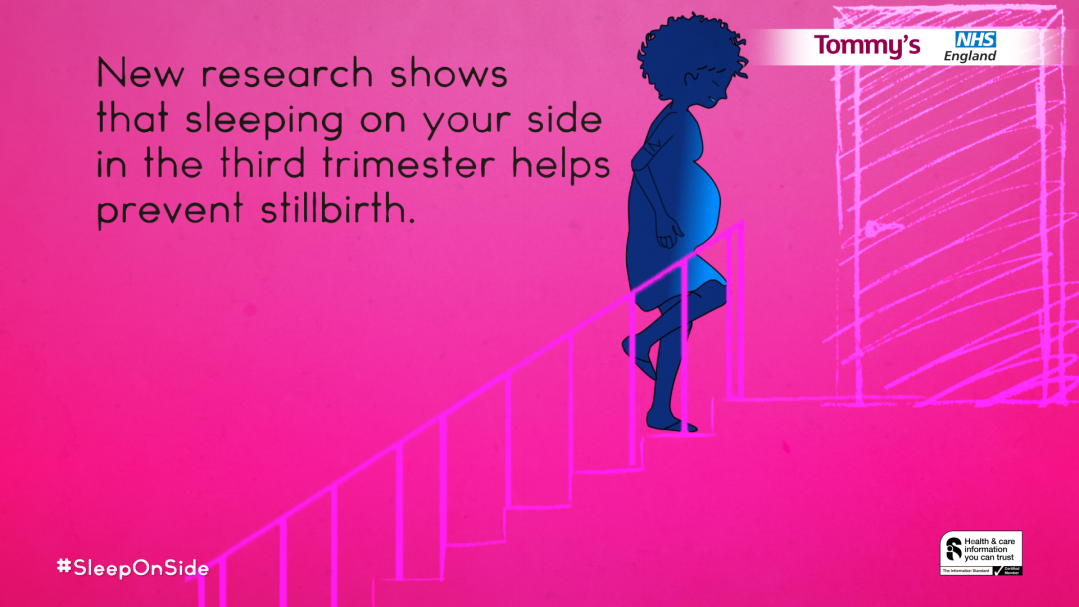
What is the potential impact of these findings?
The MiNESS study has shown that if all women went to sleep on their sides in the third trimester, there would be a 3.7% decrease in stillbirth. This equates to potentially saving the lives of 130 babies a year in the UK. Globally, thats 100,000 babies a year. I’d support research that looks to save just one baby, so this research is huge in it’s potential impact on stillbirth rates in the UK, and internationally.
On an individual basis, sleeping on your back in the third trimester gives a 2.3-fold increased risk of stillbirth compared to women going to sleep on their sides. Not really sure on what that means? This is a greater risk than smoking during pregnancy, which shows a 1.9-fold increased risk of stillbirth. This is the message that really hit home to me. We put so much emphasis on smoking in pregnancy (rightly so), but until now haven’t known the potential of modifying sleep positions.
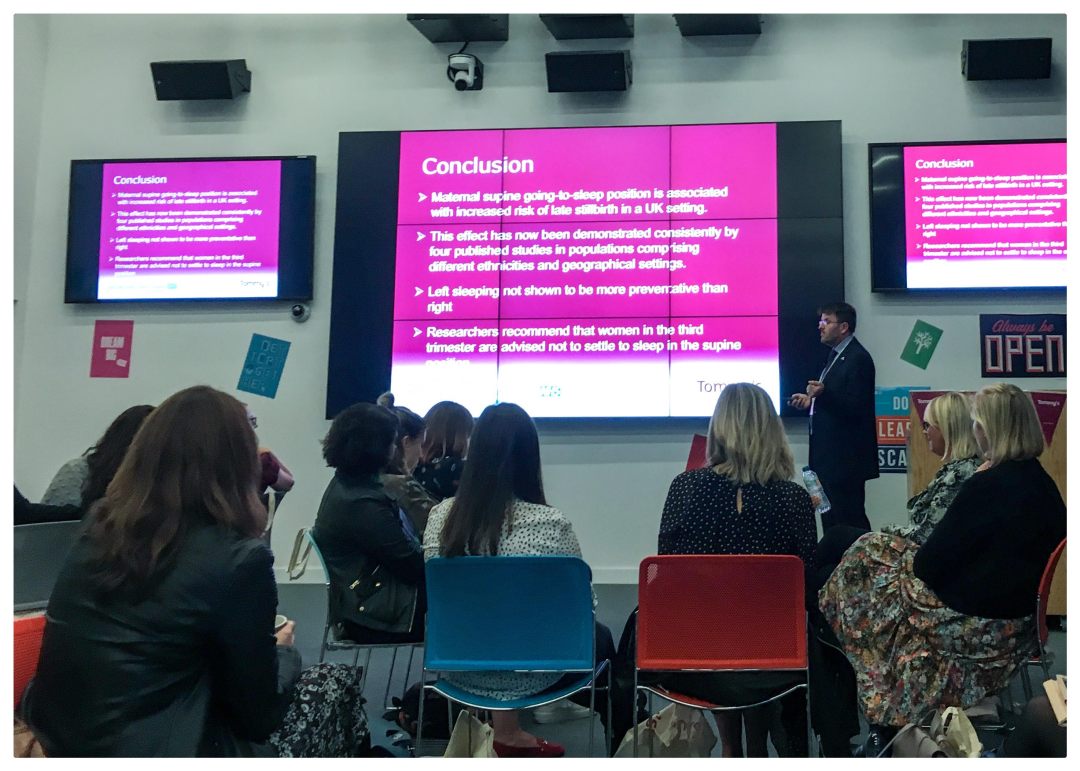
How did they conduct the research?
The MiNESS study has been led by Prof Alex Heazell, the Clinical Director of the Tommy’s Stillbirth Research Centre at St Mary’s Hospital in Manchester (where we went for scans with Eli). Being the largest study of its topic, MiNESS reviewed 291 pregnancies that sadly ended in stillbirth and 735 women who had a live birth, between April 2014 and March 2016. Previous studies from New Zealand and Australia have shown similar findings in regards to the increased risk of stillbirth from sleeping on your back in the third trimester.
But why? Researchers aren’t able to show exactly why this link exists yet, but there are some theories, with one of them being the added weight placing pressure on the main blood vessels that supply the uterus, which may restrict the oxygen and blood flow to the baby. I was already vaguely aware of this concept (mainly from Pregnancy Yoga…) but never knew about the link to stillbirth – I understood it to be more about a risk to my wellbeing, over the babies.
So, what advice is being given to pregnant women?
Tommy’s are now advising women in their third trimester to go to sleep on their sides as the position you fall asleep in is the position you will be in for the majority of the night. Women do not need to worry if they wake up in a different position – we can’t control this after all – but its worthwhile returning to sleep on your side. As napping is also a pregnant woman’s favourite pastime, its worthwhile remembering this advice for daytime naps also.
“As the going-to-sleep position is the one held longest during the night, women should not to be concerned if they wake up on their back, but should simply roll back onto their side.” – Tommys
Tommys have also given tips for sleeping on your side in the third trimester
- Put a pillow or pillows behind your back to encourage side-sleeping.
- If you wake during the night, check your position and go back to sleep on your side.
- Pay the same attention to sleep position during the day as you would during the night.
- If you wake on your back during the night, don’t worry, just roll onto your side
You can read more about sleeping safely on their website here.
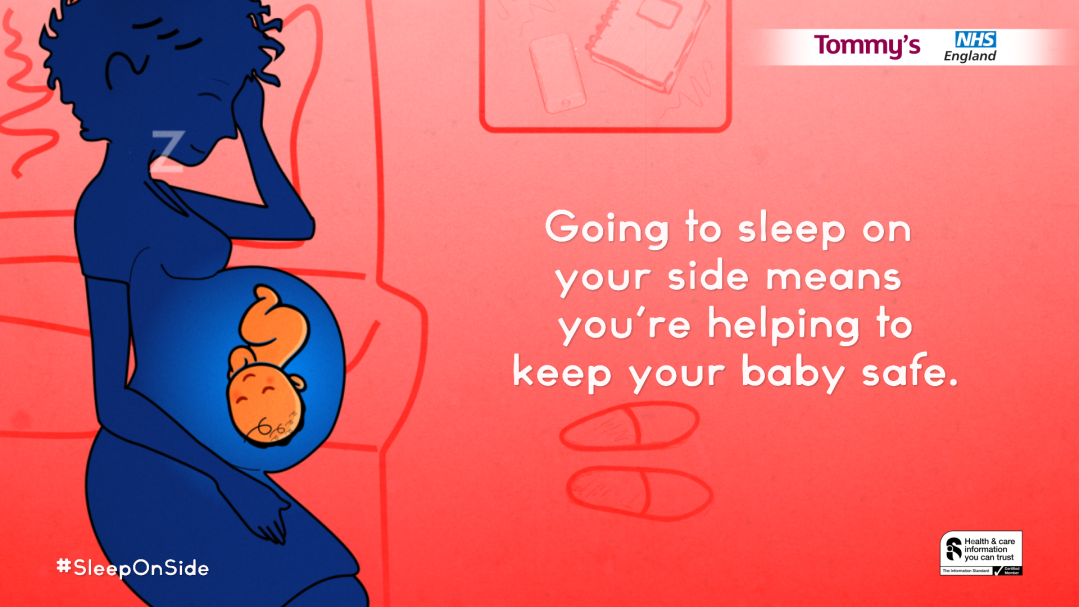
Which side is best?
The MiNESS study found no difference in women going to sleep on the left or right hand side. One of the previous studies found reduced risk from women sleeping on their left, but this was not found in the three other studies. As a result, Tommy’s #SleepOnSide campaign recommends women can go to sleep on either side.
Who else has been involved in the research?
The study was funded by Tommys, Sands, Action Medical Research and Cure Kids. The #SleepOnSide campaign has been endorsed by NHS England, the Royal College of Obstetricians and Gynaecologists, the Royal College of Midwives and the Royal College of GPs.
About the #SleepOnSide campaign
Unfortunately, for many research findings it can take many many years for the findings to impact everyday life. Tommys however, can’t sit on this research and not ensure that women are widely informed about a modifiable risk to stillbirth. The #SleepOnSide campaign aims to do just that – to let women and families know the benefits of going to sleep on your side in the third trimester, and why. Knowing why is also important. We are often given an extensive list of ‘dos and do nots’ in pregnancy, but women need to understand the reasons behind these, and often the sentence goes unfinished and the impact of those messages can be diminished.
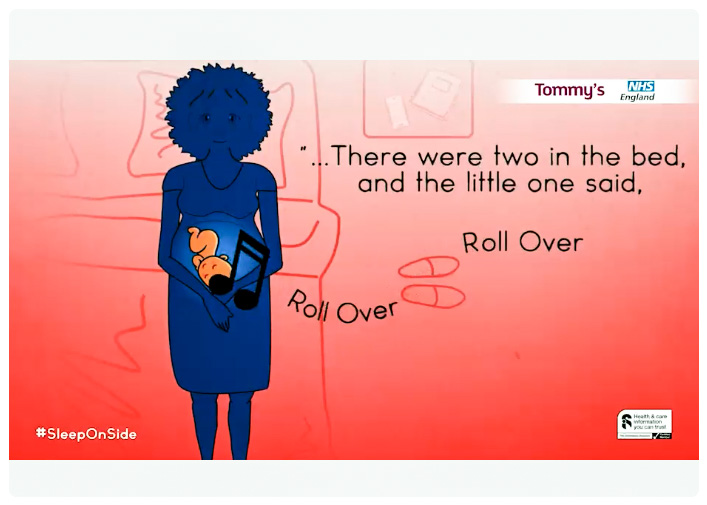
Tommys have put together a video to explain the campaign here: https://www.youtube.com/watch?v=TxwBvq7K3Jg&feature=youtu.be
The campaign will feature on the main news channels today, and shared widely online. I’d urged anyone to share them – whether you directly know someone who is pregnant or not. Health messages in pregnancy and parenting have changed over the years as a result of research (for example, the incredibly successful #BackToSleep campaign for babies has shown dramatic reductions in Sudden Infant Death), yet habits, messages and those wonderful old wives tales, often hang around far longer than we’d like. Everyone can make some level of impact in stillbirth prevention by ensuring that they are informed and able to point people in the right direction, should the need arise.
Please please do share. You can be that person who saves a babies life.
What do I think about it all?
Stillbirth research to a person who has experienced stillbirth comes with a mixture of emotions. Primarily, any research is obviously fantastic for us all – we fight daily to bring about change, to improve the UKs shocking statistics on stillbirth, to ensure no-one else understands this life. The Government is aiming to half the stillbirth rate by 2030, and it isn’t going to happen by continuing as we are and copying and pasting their aims every time someone mentions baby loss. These two facts alone sum up why it is so important.
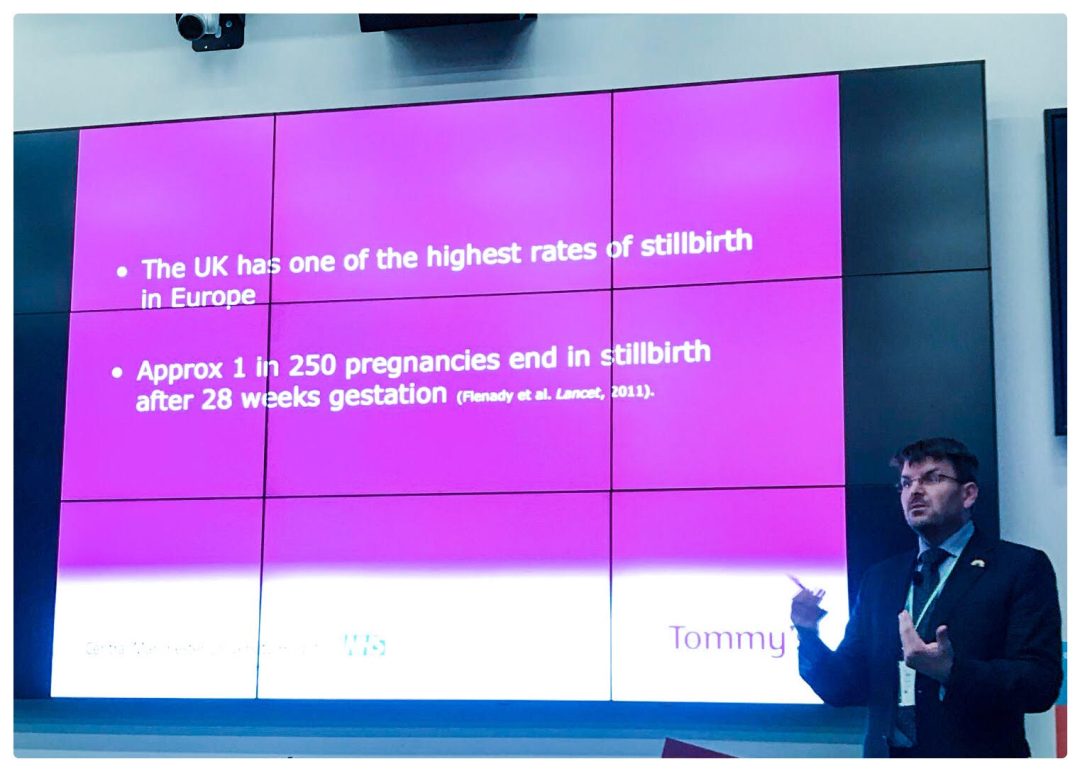
Unfortunately there is a general consensus amongst some professionals that stillbirth can’t be prevented – but this is wrong. This research shows that it can. Tommy’s show that it can. Stillbirth research isn’t drowning in funding, so supporting Tommy’s is incredibly important to us. The research that they fund, and support, really is having an impact – read more about why we support Tommy’s here.
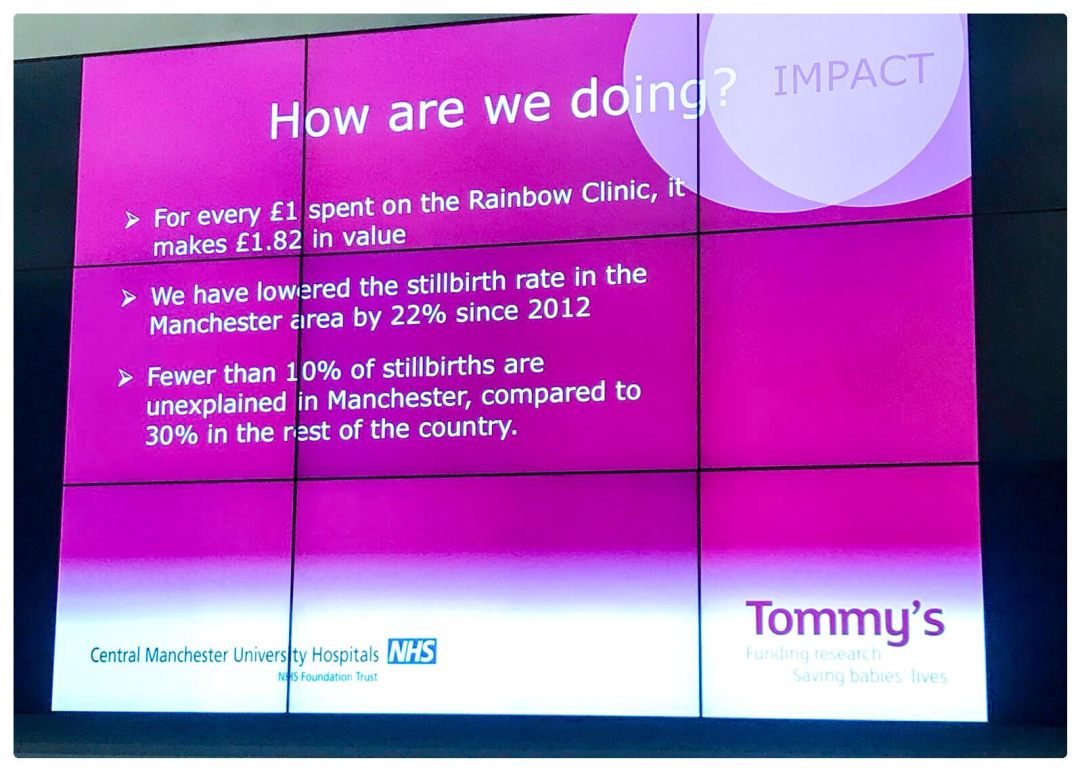
The thing that I have come to learn about stillbirth, is that is it an umbrella term for any baby who has died in the third trimester or during labour. It isn’t a single thing. The causes of these deaths are vast. Some left unknown. There is no single fix to this situation. I guess maybe thats why it seems too big a thing for people to address? Often, stillbirth risk is a result of a collection of things – like a jigsaw puzzle. If all the pieces fit, then there is risk. If we can remove one of those pieces, fail to finish the puzzle, then that risk reduces. And things like maternal sleep position can be just that – a single piece of the jigsaw, sitting alongside other risk factors. Remove it, and you may have just prevented a stillbirth.
Sleep position is a modifiable risk, and this is what the Tommy’s Stillbirth Research Centre focus on – things that we can actually change and control in order to reduce the risk of stillbirth. It really is about reducing risk by tackling the small jigsaw pieces that can come together. All the 3% reductions add up eventually. I’m thrilled that Tommy’s have taken this research and are running with a public campaign ensuring that women are aware of something that they can do to modify their risk – going to sleep on their side during the third trimester.
We may never know about the babies that are saved by this research – those potential 130 babies a year. We may never know of the near misses, and who those babies are – but there is a potential to ensure that their families know who they become, and grow up to be, and that is hugely powerful to me. Statistically, 130 babies can be saved in the UK alone per year, by this one piece of research. That is the equivalent of going approximately 13 days without a single stillbirth.
13 days doesn’t sound like much – but to each and every family, those 130 babies matter – they are individuals, with a future. With potential. With life.
As a parent who has experienced a stillbirth, hearing all of this can be a little triggering. It was and always is so powerful to hear Prof Heazell speak so candidly about stillbirth (I always tell people that there aren’t many people in the world who could speak at ease about stillbirth whilst scanning a pregnant woman – it really is refreshing). It all hits home when you hear it. I’m fairly certain that Leo died whilst I napped on the morning of the 14th January 2016. If it wasn’t then, it was certainly whilst I slept through the night. As a result, still now, I struggle to nap without fearing something will happen as a result, to someone, somewhere.
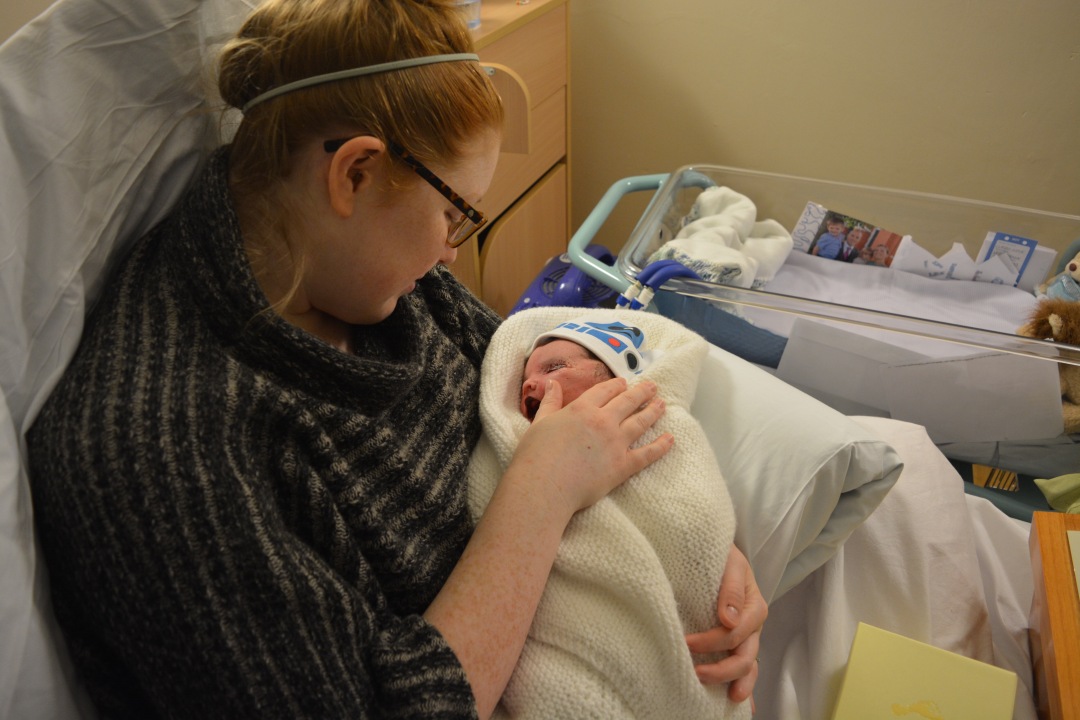
Yet I do know that I mostly slept on the left, rarely on my right, or my back. I already knew lying on my back wasn’t ideal (or comfortable) but never knew a link to stillbirth. Despite what we know about our behaviours, any form of research has the ability to grab hold of guilt and run away with it. When your baby has died – you hunt for anything, and most often, you find self-blame. You over analyse your movements leading up to their death, and generally will find fault with one of them (for me, it was a runny egg, a mouthful of pate at Christmas, a large bar of Dairy Milk the night before, and a nap). Leo didn’t die because of any of those things – he died because of a collection of things. A small placenta, resulting in poor blood flow, and slowed growth, and potentially a drop in oxygen at some point that he just couldn’t recover from. We don’t know for certain why that happened.
This self-blame is why Tommy’s have worked hard and taken advice from bereaved parents to ensure that they minimise any reason for women to blame themselves as a result of this research. It is never our fault. But it is easy for us to think it is. I’m so pleased that they have placed a focus on us as bereaved parents, as you will always question if you could have saved them and will always be frustrated by these things not being known earlier and saving your baby as a result. Could Leo have been one of the 130 babies saved if only I’d be going into my third trimester with him now, and not in 2015? And with that fleeting thought, the What Ifs get louder and stronger.
If this campaign, research or any of the coverage and commentary has been difficult on your heart – or you are pregnant now and particularly concerned or anxious – please, please seek support and call the free Tommy’s Midwives Helpline.
They know the research, and they know pregnancy and bereavement.
They are a fantastic group of midwives, and would be more than happy to receive your phone call – you can call them on 0800 0147 800 Monday – Friday, 9am – 5pm.
To keep up to date with the latest, evidence based, pregnancy health information, please ensure that you are following Tommy’s and Tommy’s Midwives on Facebook, and Twitter @tommys_baby, and @tommysmidwives. You can also use their handy infographics throughout pregnancy.
Thank you for taking the time to read, and please please share. This message is powerful. It needs to be known about.
Interested in reading the research?
Heazell A, Li M, Budd J et al, 2017, Going-to-sleep supine is a modifiable risk factor for late stillbirth – findings from the Midlands and North of England Stillbirth Case-Control Study TBC
Stacey T, Thompson JM, Mitchell EA et al, 2011, Association between maternal sleep practices and risk of late stillbirth: a case-control study. BMJ. 2011 Jun 14;342:d3403. doi: 10.1136/bmj.d3403.
Gordon A1, Raynes-Greenow C, Bond D et al, 2015, Sleep position, fetal growth restriction, and late-pregnancy stillbirth: the Sydney stillbirth study. Obstet Gynecol. 2015 Feb;125(2):347-55. doi: 10.1097/AOG.0000000000000627.
McCowan LME, Thompson JMD, Cronin RS et al, 2017, Going to sleep in the supine position is a modifiable risk factor for late pregnancy stillbirth; Findings from the New Zealand multicentre stillbirth case-control study. PLOS One https://doi.org/10.1371/journal.pone.0179396
You’re right that all the 3% risks add up… I just hope they can find some other ones too, perhaps even ways to improve prenatal technologies or care standards…
LikeLike